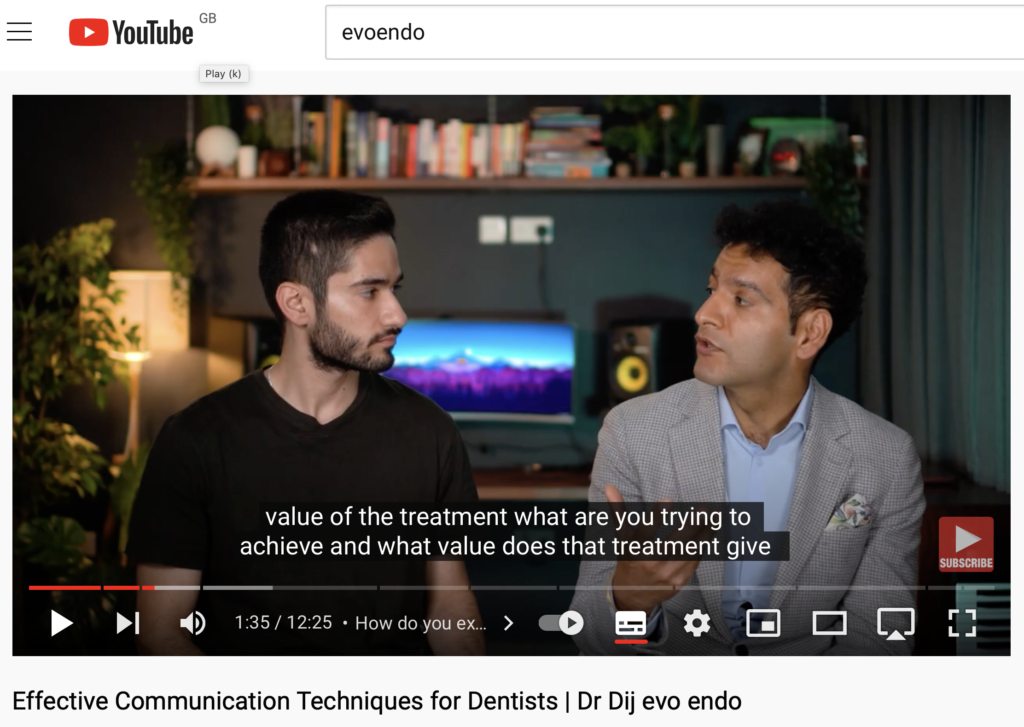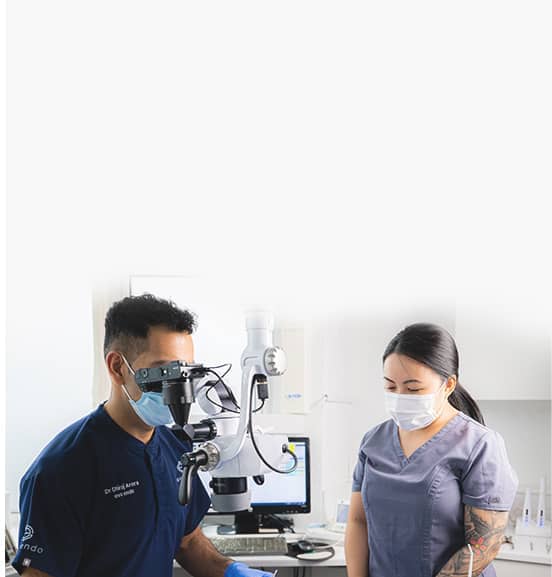
In a recent interview with Zoh at twodentists.com, Dhiraj discussed the importance of communicating well with patients – going through regular treatment explanations to more challenging conversations around fees and managing unhappy patients. Good communications, conducted carefully, can make all the difference in the quality of patient visits, patient care and the kind of open and honest relationships that can (and should) be created.
This article uses the words ‘communicate’ and ‘understand’ more often than we’d like but seriously, that’s what it’s all about!
If you prefer, you can click on the image above to view the interview – or read on!
Step 1: Understand your patient’s expectations
It’s really important that we know what our patients expect. We need to ask all the right questions, understand how they feel about any proposed treatments and ensure they can fully understand the expected outcome. Two-way understanding is vital here so you are both on exactly the same page. It also allows you to manage any misconceptions and present your treatment plan clearly and transparently.
Step 2: Presenting the value and benefits of treatment
When explaining treatments, take the time to explain the value of it, what you are looking to achieve and why it’s important – whatever it might be – saving a tooth, eliminating pain or improving oral health. Understand that your patient’s values might not be exactly the same as yours and respect their wishes whilst making sure they completely understand the different options available.
Step 3: Should we show and tell?
As you talk to your patient, you can include different levels of detail as necessary. Respond in the way that suits them – take your lead from their level of questioning and the complexity of the treatment. Include X-rays if you think there is value in that level of knowledge. Certainly, in more complicated procedures, show and tell is really useful. A picture speaks a thousand words of course.
Step 4: Will statistics be baffling or useful?
Similarly, use statistics wisely. Overload is pointless but some indication of treatment longevity or an idea of potential success rates can be valuable. Stats might also help your patient in any decision making required. Dhiraj specifically uses numbers if a treatment is less predictable. Delivering an idea of the likelihood of success can be illuminating (either way – in favour or against treatment).
There is never a reason to pursue treatment that you don’t think will work. Equally if a tooth is unlikely to survive the next twelve months, communicate that to the patient – they need to know so they can make an intelligent decision with all the facts at their disposal.
Step 5: Communicating patient care
If you have a patient that isn’t completely satisfied with their outcomes, Dhiraj suggests a common-sense approach that involves listening, understanding, managing and caring. To begin to understand your patient’s emotions (even if you don’t agree) means you have to be calm, relaxed and show empathy. Avoid mirroring any angry or uncomfortable behaviour at all costs. Then follow these steps:
• Give the patient all the information they need
• Make them aware of their options
• Understand their concerns
• Show you care
• Illustrate the next stages
• Ensure you understand each other
At this point you might need to suggest a referral to a specialist but most importantly, show you care. Never be blasé or dismiss concerns. Remain in control, show your confidence, explain your thinking and take it from there.
If you are delivering bad news, explain it calmly and simply. Allow it to sink in and be fully understood before continuing. Again, a radiograph might be beneficial here.
Step 6: Answering concerns over costs
It’s always a good idea to have outlined the value of the treatment well before this stage so the patient appreciates what the outcome will mean to them. For example – don’t simply tell your patient they need a crown. Explain that a crown will mean they will be able to chew comfortably with a better looking tooth.
Gently remind patients of the investment they are making in their health and the constant use of their teeth (which are part of their body) – there is value in both of these things.
Also remember that your patient might simply not be able to afford dental care or they might have different priorities. Your role is to inform them at every stage and to be as clear and open as you can.
In summary:
• Think before you speak, know what you are going to deliver
• Be aware of verbal and non verbal communications
• Have some authority and confidence, use images if this helps or is appropriate
• Consider how the patient is receiving the information
• Work with the patient and show you care


With practices in London and the South of England I am able to help your patients with dedicated and experienced endodontic care.
Read more

Aimed specifically at early career dentists, I can help with both the practical and patient care aspects of becoming a seriously good endodontist. Currently we have two courses running with dates set for 2023. Shake up your Shaping (1 day) and Endo Roots (3 days).
Read more
